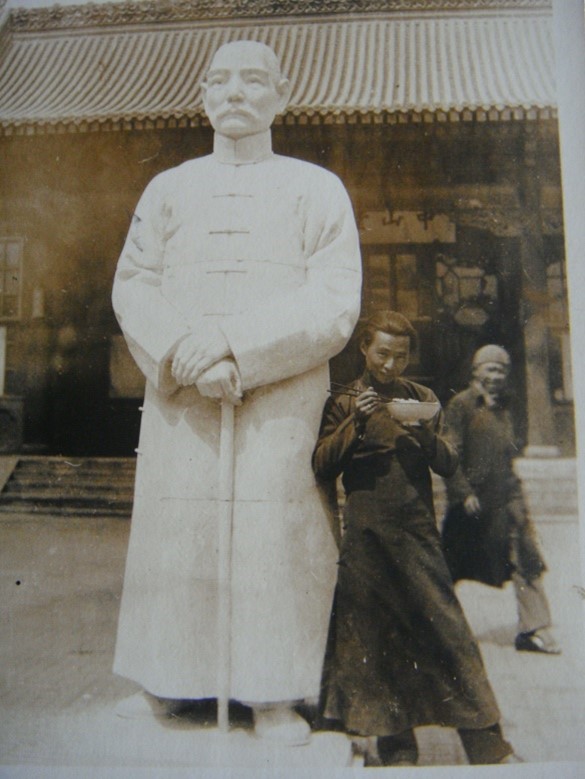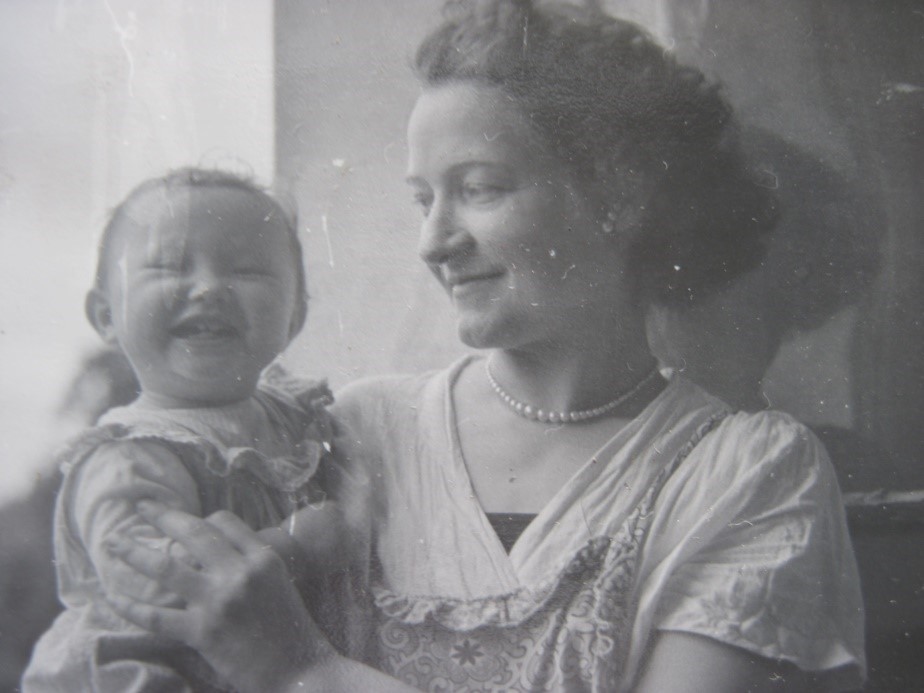1. IN CHINA – THE FAMILY CIRCLE
Yan Dehui, known in France as Yen Te-Fai, was born on July 15, 1908, in the Yongjia district, Zhejiang province, in southern China - now Lu Cheng Ward in Wenzhou. Growing up in a scholarly household, Yan was deeply influenced by his father, Yan Shaoyao, a connoisseur of traditional Chinese literature, skilled calligrapher, and poet. Yan Shaoyao instilled in his son not only a love for the arts but also values of honesty and a strong stance against
2. STUDIES AND TEACHING IN CHINA – 1920 TO 1935
Aware of his creative potential, Yan Dehui's mother encouraged him to apprentice with Zhu Zichang, a master wood sculptor from the Wenzhou school. At 13, while continuing his schooling, Yan began working with boxwood, a material appreciated for its flexibility and fine grain. Under Zhu's guidance, it took him only five years to master the art of direct carving, producing works representing both religious and secular figures. He then enriched his initial training at the Shanghai Academy of Fine Arts, where he adopted new techniques and artistic ideas inspired by Western art…
3. IN CHINA, A CAREER IS TAKING SHAPE
At the beginning of his career, Yan Dehui's work showcased a remarkable diversity of materials and styles. Alongside his studies, he created a few portraits, continued wood carving, and gained recognition from the Ministry of Education, which, having noticed his work, invited him to participate in a significant National Art Exhibition in Shanghai. The religious figurines of the Immortal Nanji and the Buddha Maitreya that he presented were particularly noted. During this period, Yan assisted his teacher, Jiang Xiaojian, in creating an equestrian bronze statue and received an important public commission…
4. THE JOURNEY TO THE WEST
At a pivotal moment in history, Yan Dehui's artistic journey aligned with China's attempt at modernization. Recognizing that technical progress was essential to overcoming economic challenges, Minister of Education Cai Yuanpei launched the "Work-Study Movement" in the 1920s. This program enabled nearly 2,000 Chinese students to train in France. The cultural sector was also part of this initiative, with many artists encouraged to study Western art to help China enter the modern era. It was Paris, as a global cultural beacon, that welcomed Yan…
5. LIFE IN PARIS
The École Nationale Supérieure des Beaux-Arts (ENSBA) in Paris was the epicenter of Western art education, attracting over a hundred Chinese artists between the 1920s and early 1950s. Yan Dehui, recommended by Liu Haisu, the director of the Shanghai Academy of Fine Arts (SAFA), joined ENSBA on April 21, 1938, and studied under the tutelage of Henri Bouchard, a renowned sculptor known for his monumental works. There, he reunited with several artist friends, including the sculptor Hua Tianyou. Both were recognized and rewarded throughout their time at ENSBA and also attended the Académie de la Grande Chaumière…
6. THE ARTISTIC COMMUNITY IN FRANCE
The École Nationale Supérieure des Beaux-Arts (ENSBA) was a crucible for Chinese artists in the early 20th century. Among them, Yan Dehui, Hua Tianyou, Pan Yuliang, Zhou Lin, and Xiong Bingming were significant members of the Chinese artistic community in Paris. They were joined by other personalities such as Li Huinian, Li Xian Ming, Huang Zhiping, Zhang Ziyi, Liu Shenshan, Fang Yong, Li Fengbai, Liao Xinxue, and Ma Xiaojun. These artists frequently met to avoid isolation in a foreign land, forming a strong network of support and cultural exchange within the Association of Chinese Artists in France…
7. EXHIBITIONS – 1938 TO 1950S
One of the primary ways for Chinese artists in Paris to gain recognition was by participating in prestigious exhibitions. Yan Dehui showcased his works in numerous significant venues, beginning with the Salon des Artistes Français in 1938 at the Grand Palais. His involvement continued through the 1940s and 1950s with exhibitions at the Société Nationale des Beaux-Arts (SNBA), the Musée Cernuschi, and the Salon des Indépendants…
8. FAMILY IN FRANCE
While the desire to perfect his art led Yan Dehui to leave China in 1938, his encounter with Louise Lenoir in 1949 would change the course of his life. Choosing to settle in France, he founded a family and integrated into a new culture and environment. Louise became Louise Yen-Lenoir after their marriage in 1953 and was awarded the Legion of Honor in the Cour d'Honneur des Invalides in 1979 for her bravery in the Resistance during World War II. Arrested by the Gestapo in 1944, she spent a year…
9. MONTARGIS, THE LAST EXHIBITIONS IN PARIS AND THE RETURN TO CHINA
In the late 1960s, Yan Dehui exhibited in Montargis, a town with a rich history of Chinese student presence. There, he befriended Georges Thouvenot, a recognized local artist. Yan's exhibitions in Montargis earned him a grand prize for his marble self-portrait in 1967. Returning to Paris in 1970, Yan worked within the Chinese community and continued to sculpt. He exhibited at the Salon des Artistes Français and won a bronze medal in 1971. In 1977, after 40 years of absence, Yan returned to China…










